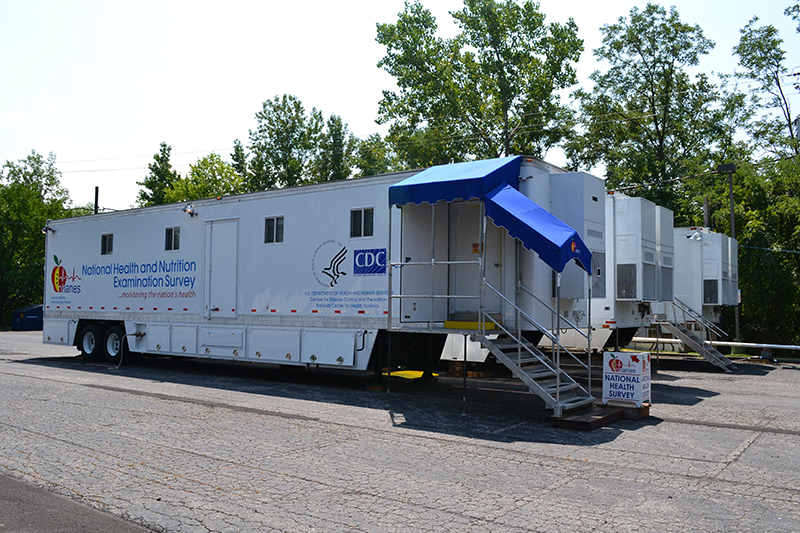Mobile Examination Centers Measure America’s Health
Posted on byThousands of subjects, tens of thousands of miles, and nearly two years after it began, NCHS’s latest journey to map the health of the American public is slowly drawing to a close.
In late-January 2013, the mobile examination centers of the National Health and Nutrition Examination Survey (NHANES) will pause while staff members complete their last interviews and examinations for the 2011-2012 NHANES. Then, after the final data are submitted for analysis, they will undergo a quick re-fitting and re-training and hit the road for another two-year expedition.
NHANES is a program of studies designed to measure and assess the health and nutritional status of adults and children in the United States. It is the only nationally representative health survey conducted in the United States that combines both interviews and physical examinations to develop a thorough, detailed picture of American health. Begun in the 1960s, NHANES became a continuous program in 1999.
In its 50-plus years of service, NHANES has contributed data that identified the dangers of cigarette smoking and second-hand smoke, lead in gasoline and paint, and mercury exposures in women and children. NHANES data form the basis for pediatric growth charts, one of NCHS’s most widely used products. NHANES dietary data are used for Federal nutrition recommendations, dietary programs, and policy. Its “firsts” include the first nationally measured physical activity data in the U.S., and the first nationally exam-based survey of gallbladder disease.
NHANES conducts exams in mobile examination centers (MECs), which are essentially traveling clinics. Each MEC comprises four 52-foot-long trailers; the 2011-12 survey includes a fifth 48-foot-long trailer for conducting the National Youth Fitness Survey. Three MECs travel across the country to randomly-selected destinations, with two in operation and one being set up at any given time.

Each MEC is a self-contained, state-of-the-art medical facility that features some of the most advanced medical technology available. A Hologic DXA full-body scanner provides images displaying the distribution of fat, lean tissue, and bone, a critical tool in assessing obesity and osteoporosis. Secure onboard telecommunications equipment provides instantaneous, centralized backup of data at NCHS from data collected at MEC sites anywhere in the U.S. (Starting in 2013, the dental exam will feature a new digital camera designed to detect fluorosis. NHANES will employ three of the six cameras currently in available.)
Each survey is updated from the preceding one to focus on emerging issues, dig deeper into existing ones, and explore areas that might not normally get attention. New in the 2011-2012 survey are cognitive skills examinations for adults 60 and older, Asian-American oversampling, and the National Youth Fitness Survey. NHANES is also pilot-testing a chemosensory exam that measures the ability to taste and smell certain substances. Sponsored by the National Institute on Deafness and Other Communication Disorders, the exam seeks to collect data on taste and smell disorders. It will be a full component of the 2013-2014 survey. Impaired taste and smell can lead to unhealthy dietary changes and exposure to unsafe conditions, or be symptomatic of serious health conditions including Parkinson’s disease, Alzheimer’s disease, or multiple sclerosis.
Collaborators from CDC, NIH, the Department of Agriculture, the Department of Defense, and other agencies propose and help design survey examinations, questionnaires, and laboratory tests. They also contribute roughly one-third of NHANES’s funding, and many millions more through their in-kind contributions.
Posted on by

